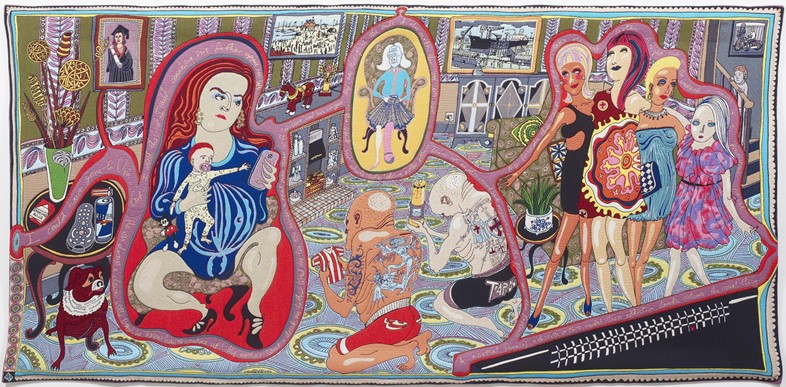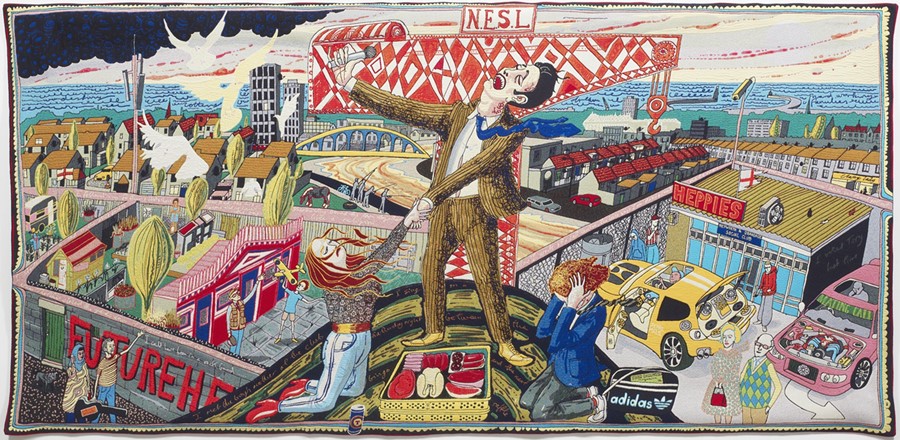The Who, What, Why of Grayson Perry's new series of tapestries
Who? Grayson Perry: The Vanity of Small Differences features six tapestries designed by Perry, created last year during his television series, All The Best Possible Taste, which explored the long debated definition of taste within Britain, and in turn how taste is defined by social class.
What? The tapestries include The Agony in the Car Park, which depicts a wealthy young man meeting his end in a car crash with the haunting byline "all that money and he dies in the gutter", or Expulsion From Number Eight Eden Close, featuring a young graduate on a housing estate, excluded from a North London dinner party. Perry’s signature thread of humour runs through each woven story; they are instinctive yet poignant, representing the subcultures of Britain by challenging our social class system and with that our aspirations and insecurities.
"Each woven story is instinctive yet poignant, representing the subcultures of Britain by challenging our social class system and with that our aspirations and insecurities"
Why? The idea of taste questions our attachments to objects and their biographical weight. Each tapestry embodies emblems of supposed class, such as The Guardian, Citroën car keys, an Adidas bags or an iPad, each a subtle and often humourous nod to the class system; small ironic details such as “Class Traitor” on a Penguin Book cup or “Understatement” on a book end. Through these tapestries, the exhibition arrives at the subliminal message that good taste is one that is inoffensive; an act of good taste is one done without hurting others.
It is the wonderful contrasts within the project that make each textile so compelling: a traditional craft brought alive by very current ideas; the fact that each one references an artistic great, such as Expulsion from the Garden of Eden by early Renaissance artist Masaccio, or William Hogarth’s “A Rake’s progress”, which regales Tom Rakewell’s climb up the class ladder. Hogarth often referenced the class divide within his work (such as A Harlot’s Progress) and proved a recurring influence to Perry throughout his study.

The Arts Council Collection tour of Grayson Perry's The Vanity of Small Differences starts at Sunderland Museum on 28 June.
Text by Mhairi Graham
